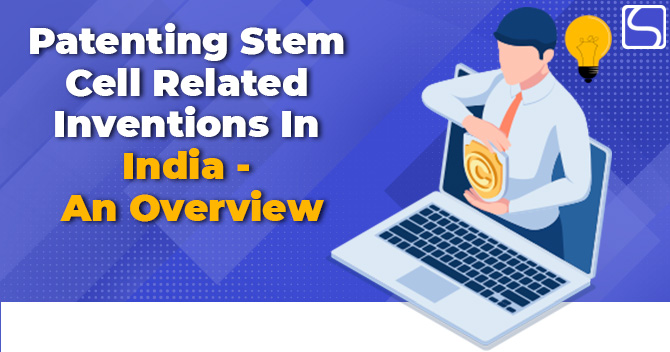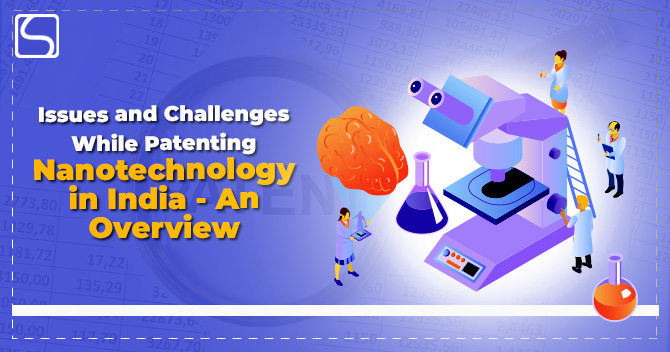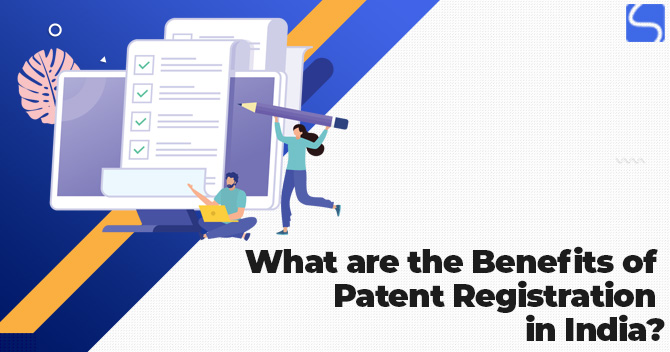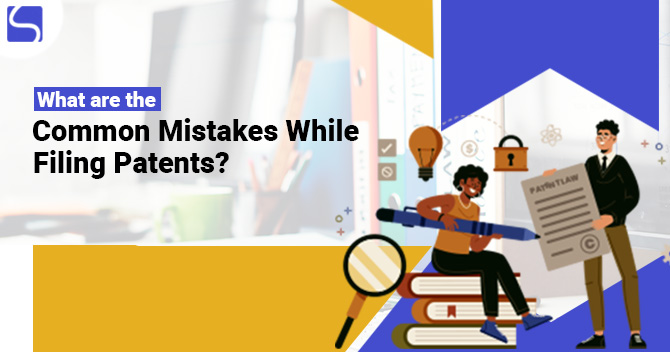Patenting Stem Cell Related Inventions in India – An Overview

Karan Singh | Updated: Mar 21, 2022 | Category: Patent
Stem cells are cells that can distinguish or develop into various types of cells. This distinctive characteristic grants them great medical significance as they can unravel many secrets regarding living organisms, mortality, and diseases and may even be able to treat them. In this blog, we will discuss patenting stem cell-related inventions in India.
Table of Contents
Types of Stem Cells
There are 2 primary types of stem cells are:
- SSCs or Somatic Stem Cells: Somatic Stem Cells are undifferentiated cells found throughout our bodies. They replace dying cells & regenerate or repair damaged tissues. Somatic Stem Cells are multipotent, i.e., they can distinguish into specialised cells in a specific lineage. For instance, hematopoietic stem cells can distinguish into types of blood cells.
- ESCs or Embryonic Stem Cells: These cells are derived from embryos and they are usually isolated from the embryo 3 to 5 days after fertilisation. Embryonic Stem Cells are pluripotent i.e., they can distinguish into most types of cells. There are other sources/types of stem cells also. For instance, stem cells can be attained from the umbilical cord or via artificially activating an unfertilised egg to behave like an embryo, etc.
Patenting Stem Cell (Embryos Cell) in India
According to the Patents Act, 1970, patenting stem cell is not possible for now due to exclusions under Section 3 (c) (finding of any living thing or non-living substances occurring in nature) and Section 3(j) (plants & animals in whole or any part thereof other than micro-organisms). Under Section 3(i), patenting stem cell-based therapies is not possible in India, which excludes processes for the medical or related treatment of animals or human beings.
Some inventions concerning stem cells, like unique and inventive synergetic compositions, and methods of processing, differentiating, preparing, attaining stem cells, maybe patentable given they don’t fall under Section 3(b). This provision eliminates from patentability inventions whose use or commercial exploitation could be contrary to public order/morality/cause prejudice to the health of the environment or living organisms. Section 3(b) is originated from Article 27(2) of the Agreement on TRIPS. TRIPS adds a caution that such exclusion from patentability should not be mere because the misuse of the invention is prohibited by law.
The stem cells source are of primary concern in stem cell-based inventions. Moral & ethical problems emerge due to ESCs being attained from the destruction of embryos. The issues become more difficult when commercial exploitation is added into the mix. The IPO or Indian Patent Office has had different run-ins with Patent registration applications for stem cell-based inventions.
When a Patent application in India 1492/DELNP/2007 was objected to under Section 3(b), the applicant or candidate argued that the stem cells were collected from the umbilical cord, otherwise generally discarded after birth, which was collected with the approval of the mother. The specification also deliberated the cord collection, and the application was allowed.
Indian Patent application 4551/CHENP/2008 initially claimed a method for selecting cardiomyocytes from a cell mixture containing cardiomyocytes & non- cardiomyocytes derived from embryonic stem cells or cells having identical characteristics. To conquer the objection under Section 3(b), a disclaimer was added to the claim that no cells originating from human embryonic stem cells were engaged. An identical disclaimer was added to the claims of Indian Patent application 6526/CHENP/2008. The specifications in both these instances taught that the disclosed inventions could work with stem cells attained without the destruction of human embryos.
The Indian Patent Office required clarification of IPA 3649/DELNP/2008. Whose claim was directed to a method for producing pluripotent human stem cells, which involved parthenogenetically activating an unfertilised human egg. The applicant submitted that a parthenote was dissimilar from an embryo as it was incompetent of developing into a feasible fetus and the application was permitted. Here, the European Court of Justice’s decision in C-364/13 on parthenotes was dependent, where it was held in order to be categorised as a human embryo, a non-fertilised human ovum must mandatorily have the inherent capacity of developing into a human. The CJEU also said that unfertilised human ova whose division & further development have been encouraged by parthenogenesis is not comprised in the term “human embryos” as long as they are not capable of developing into a human and have not been genetically operated to get such a capacity.
Applying for Patenting Stem Cell bases Inventions
The law is clear that patenting stem cell and stem cell-based therapies are not possible. The other types of stem cell-based prosecution, practice, and inventions suggest that inventions involving the use of human ESCs attained by the destruction of human embryos are not patentable in India. The time at which such destruction takes place is unrelated. Hence, even if an inventor has used established cell lines derived from human embryos, the claims are likely to be rejected.
If the application is filed for a human ESC-related invention, the Patent description should contain at least some embodiments/examples showing that, at the filing date of application, the invention could be worked without destroying human embryos. Documented scientific outcomes accompanied by an affidavit would help demonstrate this. If required to do so, it’s recommendable to change claims to add a disclaimer that human ESCs attained from human embryos were not used. The Indian Patent Office may also insist on requiring the deletion of paragraphs concerning human ESCs attained by finishing human embryos from the specification.
Conclusion
It’s nothing wrong to say that stem cell research is a very auspicious field and can prove to be a boon for the biotechnology sector of the country. Research in this field must be encouraged by providing appropriate IPR (Intellectual Property Rights[1]) to such inventions.














